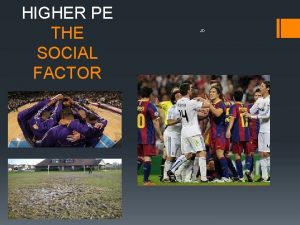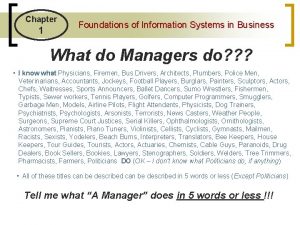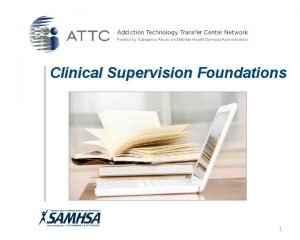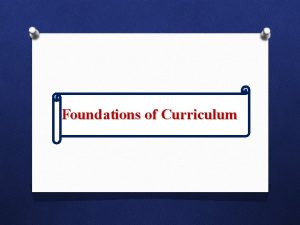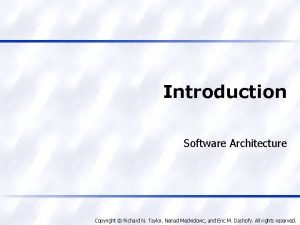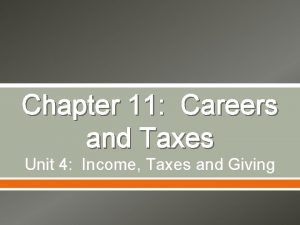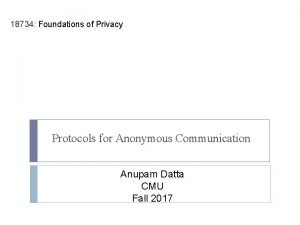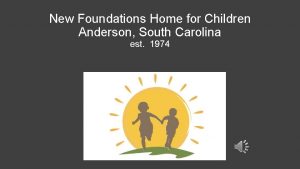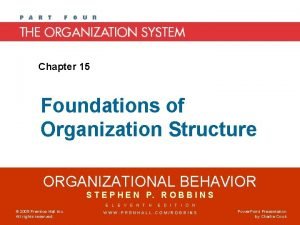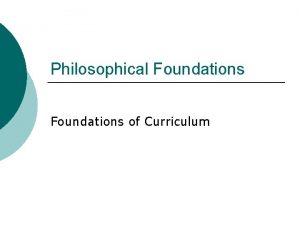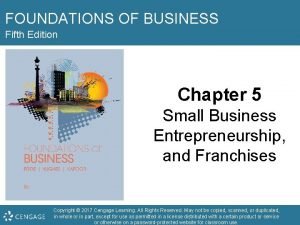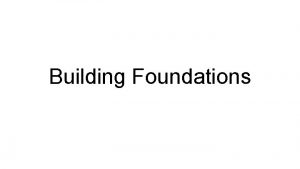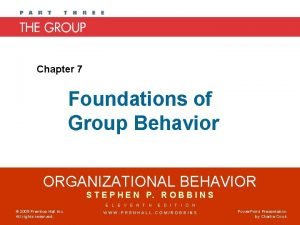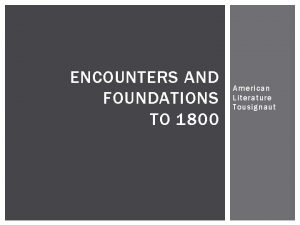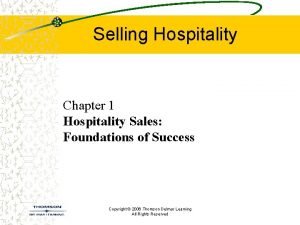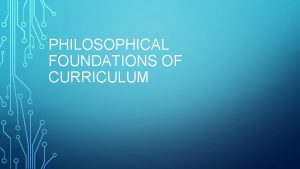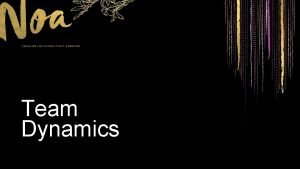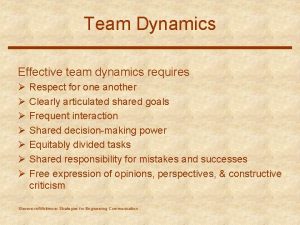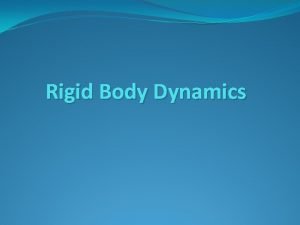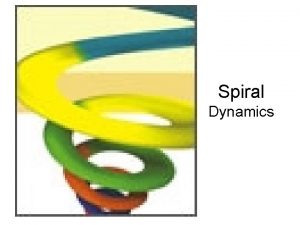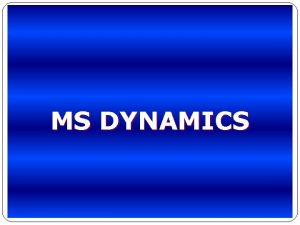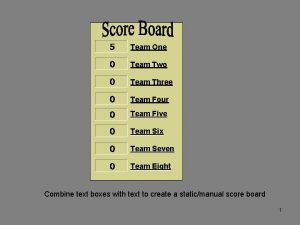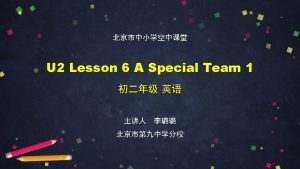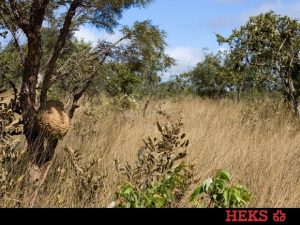9 Foundations of Team Dynamics Mc GrawHillIrwin 2008



























- Slides: 27

9 Foundations of Team Dynamics Mc. Graw-Hill/Irwin © 2008 The Mc. Graw-Hill Companies, Inc. All rights reserved.

Teamwork In the Securities Industry Paul Tramontano (2 nd from left) and other professionals in the securities industry have formed teams to better serve clients. Tramontano heads a 12 -person team (called the Topeka Wealth Management Group) at Citigroup’s Smith Barney. Mc. Shane/Von Glinow OB 4 e Slide 9 -2 © 2008 The Mc. Graw-Hill Companies, Inc. All rights reserved.

What are Teams? • Groups of two or more people • Exist to fulfill a purpose • Interdependent -- interact and influence each other • Mutually accountable for achieving common goals • Perceive themselves as a social entity Mc. Shane/Von Glinow OB 4 e Slide 9 -3 © 2008 The Mc. Graw-Hill Companies, Inc. All rights reserved.

Groups versus Teams • All teams are groups • Some groups are just people assembled together • Teams have task interdependence whereas some groups do not (e. g. , group of employees enjoying lunch together) Mc. Shane/Von Glinow OB 4 e Slide 9 -4 © 2008 The Mc. Graw-Hill Companies, Inc. All rights reserved.

Many Types of Teams • Departmental teams • Skunkworks • Production/service/ leadership teams • Task force (project) teams • Self-directed teams • Virtual teams • Advisory teams • Communities of practice Mc. Shane/Von Glinow OB 4 e Slide 9 -5 © 2008 The Mc. Graw-Hill Companies, Inc. All rights reserved.

Why Rely on Teams • Compared with individuals working alone, teams tend to: – Make better decisions – Make better products and services due to more knowledge and expertise – Increase employee engagement Mc. Shane/Von Glinow OB 4 e Slide 9 -6 © 2008 The Mc. Graw-Hill Companies, Inc. All rights reserved.

Why Informal Groups Exist 1. Innate drive to bond 2. Social identity – We define ourselves by group memberships 3. Goal accomplishment 4. Emotional support Mc. Shane/Von Glinow OB 4 e Slide 9 -7 © 2008 The Mc. Graw-Hill Companies, Inc. All rights reserved.

Team Effectiveness Defined • Fulfills objectives assigned to the team • Fulfills satisfaction and well-being of team members • Maintains team’s survival Mc. Shane/Von Glinow OB 4 e Slide 9 -8 © 2008 The Mc. Graw-Hill Companies, Inc. All rights reserved.

Team Effectiveness Model Organizational and Team Environment • Reward systems • Communication systems Team Design • Task characteristics • Team size • Team composition • Physical space • Organizational environment • Organizational structure • Organizational leadership Mc. Shane/Von Glinow OB 4 e Team Effectiveness Team Processes • Team development • Team norms • Team roles • Team cohesiveness Slide 9 -9 • Achieve organizational goals • Satisfy member needs • Maintain team survival © 2008 The Mc. Graw-Hill Companies, Inc. All rights reserved.

Team’s Task and Size • Task characteristics – Better when tasks are clear, easy to implement – Share common inputs, processes, or outcomes – Task interdependence • Team size – Smaller teams are better – But large enough to accomplish task Mc. Shane/Von Glinow OB 4 e Slide 9 -10 © 2008 The Mc. Graw-Hill Companies, Inc. All rights reserved.

Levels of Task Interdependence High A Reciprocal B A Sequential B C Resource Pooled A Low Mc. Shane/Von Glinow OB 4 e C Slide 9 -11 B C © 2008 The Mc. Graw-Hill Companies, Inc. All rights reserved.

Shell Looks for Team Players Shell holds the 5 -day Gourami Business Challenge in Europe, North America, and Asia to observe how well the university students work in teams. One of the greatest challenges is for Gourami session in Asia -- Courtesy of Shell International Ltd students from different cultures and educational specializations to work together. Gourami session in U. S. A. -- Courtesy of Shell U. S. Mc. Shane/Von Glinow OB 4 e Slide 9 -12 © 2008 The Mc. Graw-Hill Companies, Inc. All rights reserved.

Team Composition 1. Motivation – To perform task – To work cooperatively the team 2. Competencies – Skills and knowledge to perform the task Gourami session in Asia -- Courtesy of Shell International Ltd – Ability to work effectively with each other 3. Homogeneous or heterogeneous, depending on task requirements Gourami session in U. S. A. -- Courtesy of Shell U. S. Mc. Shane/Von Glinow OB 4 e Slide 9 -13 © 2008 The Mc. Graw-Hill Companies, Inc. All rights reserved.

Homogeneous vs. Heterogeneous Teams Homogeneous Teams Heterogeneous Teams • Less conflict • More conflict • Faster team development • Longer team development • Performs better on cooperative tasks • Performs better on complex problems • Better coordination • More creative • High satisfaction of team members • Better representation outside the team Mc. Shane/Von Glinow OB 4 e Slide 9 -14 © 2008 The Mc. Graw-Hill Companies, Inc. All rights reserved.

Stages of Team Development Performing Norming Storming Forming Mc. Shane/Von Glinow OB 4 e Existing teams might regress back to an earlier stage of development Slide 9 -15 Adjourning © 2008 The Mc. Graw-Hill Companies, Inc. All rights reserved.

Team Norms • Informal rules and expectations team establishes to regulate member behaviors • Norms develop through: – Initial team experiences – Critical events in team’s history – Experience/values members bring to the team Mc. Shane/Von Glinow OB 4 e Slide 9 -16 © 2008 The Mc. Graw-Hill Companies, Inc. All rights reserved.

Changing Team Norms • Introduce norms when forming teams • Select members with preferred norms • Discuss counter-productive norms • Reward behaviors representing desired norms • Disband teams with dysfunctional norms Mc. Shane/Von Glinow OB 4 e Slide 9 -17 © 2008 The Mc. Graw-Hill Companies, Inc. All rights reserved.

Conformity to Team Norms 100 Day 12: Peer pressure begins 75 Units Pressed per Hour Day 28: Employee has doubled performance 50 25 0 Day 20: Employee begins working alone Day 1: Employee begins job with team 4 8 12 16 20 24 28 32 36 40 Production Days Mc. Shane/Von Glinow OB 4 e Slide 9 -18 © 2008 The Mc. Graw-Hill Companies, Inc. All rights reserved.

Team Roles • Role -- set of behaviors people are expected to perform in certain positions – Formally assigned or informally acquired based on personality preferences • Belbin’s Team Role Model – Nine team roles -- all needed for optimal team performance – People choose preferred role based on their personality – Some roles more important at particular stages Mc. Shane/Von Glinow OB 4 e Slide 9 -19 © 2008 The Mc. Graw-Hill Companies, Inc. All rights reserved.

Team Cohesiveness at Lighthouse Photo: Robert Hirtie. Courtesy of Atlantic Business Magazine & Lighthouse Publishing The staff at Lighthouse Publishing is a highly cohesive group that successfully keeps its much larger competitors off-guard. This cohesiveness has particularly come through when faced with new and unexpected challenges, such as new products or machine breakdowns. Mc. Shane/Von Glinow OB 4 e Slide 9 -20 © 2008 The Mc. Graw-Hill Companies, Inc. All rights reserved.

Team Cohesiveness Defined Photo: Robert Hirtie. Courtesy of Atlantic Business Magazine & Lighthouse Publishing • The degree of attraction people feel toward the team and their motivation to remain members • Calculative -- members believe the team will fulfill goals and needs • Emotional -- team is part of person’s social identity Mc. Shane/Von Glinow OB 4 e Slide 9 -21 © 2008 The Mc. Graw-Hill Companies, Inc. All rights reserved.

Influences on Team Cohesiveness Member Similarity External Challenges Team Success Increasing Team Cohesiveness Team Size Member Interaction Somewhat Difficult Entry Mc. Shane/Von Glinow OB 4 e Slide 9 -22 © 2008 The Mc. Graw-Hill Companies, Inc. All rights reserved.

Team Cohesiveness Outcomes 1. Want to remain members 2. Willing to share information 3. Strong interpersonal bonds 4. Resolve conflict effectively 5. Better interpersonal relationships Mc. Shane/Von Glinow OB 4 e Slide 9 -23 © 2008 The Mc. Graw-Hill Companies, Inc. All rights reserved.

Cohesiveness and Performance Team Norms Support Company Goals Team Norms Oppose Company Goals Mc. Shane/Von Glinow OB 4 e Moderately high task performance High task performance Moderately low task performance Low Team Cohesiveness High Team Cohesiveness Slide 9 -24 © 2008 The Mc. Graw-Hill Companies, Inc. All rights reserved.

The Trouble With Teams • Individuals better/faster on some tasks • Process losses - cost of developing and maintaining teams • Companies don’t support best work environment for team dynamics • Social loafing Mc. Shane/Von Glinow OB 4 e Slide 9 -25 © 2008 The Mc. Graw-Hill Companies, Inc. All rights reserved.

How to Minimize Social Loafing • Make individual performance more visible – Form smaller teams – Specialize tasks – Measure individual performance • Increase employee motivation – Increase job enrichment – Select motivated employees Mc. Shane/Von Glinow OB 4 e Slide 9 -26 © 2008 The Mc. Graw-Hill Companies, Inc. All rights reserved.

9 Foundations of Team Dynamics Mc. Graw-Hill/Irwin © 2008 The Mc. Graw-Hill Companies, Inc. All rights reserved.
 2008 2008
2008 2008 Plagiarism warning
Plagiarism warning Team dynamics france
Team dynamics france Bureaucratic bypass syndrome
Bureaucratic bypass syndrome Team spirit becomes team infatuation
Team spirit becomes team infatuation The white team cheers for the blue team, just like
The white team cheers for the blue team, just like Social and emotional foundations for early learning
Social and emotional foundations for early learning Foundations of information systems in business
Foundations of information systems in business Clinical supervision foundations ii
Clinical supervision foundations ii Different foundations of curriculum
Different foundations of curriculum Software architecture foundations theory and practice
Software architecture foundations theory and practice Section 4 best practices of successful people
Section 4 best practices of successful people California preschool learning foundations
California preschool learning foundations Foundations of privacy
Foundations of privacy Foundations of planning
Foundations of planning New foundations home for child anderson sc
New foundations home for child anderson sc Foundation of organizational structure
Foundation of organizational structure Existentialism curriculum
Existentialism curriculum Preschool learning foundations
Preschool learning foundations Supracultural model of addiction
Supracultural model of addiction Foundations of business 5th edition
Foundations of business 5th edition Types of building foundations
Types of building foundations The acceptable standards of behavior within a group
The acceptable standards of behavior within a group Chapter 1: foundations of government pdf
Chapter 1: foundations of government pdf Encounters and foundations to 1800
Encounters and foundations to 1800 Sales foundations for success
Sales foundations for success What are biographical characteristics?
What are biographical characteristics? Philosophical foundation of curriculum
Philosophical foundation of curriculum

